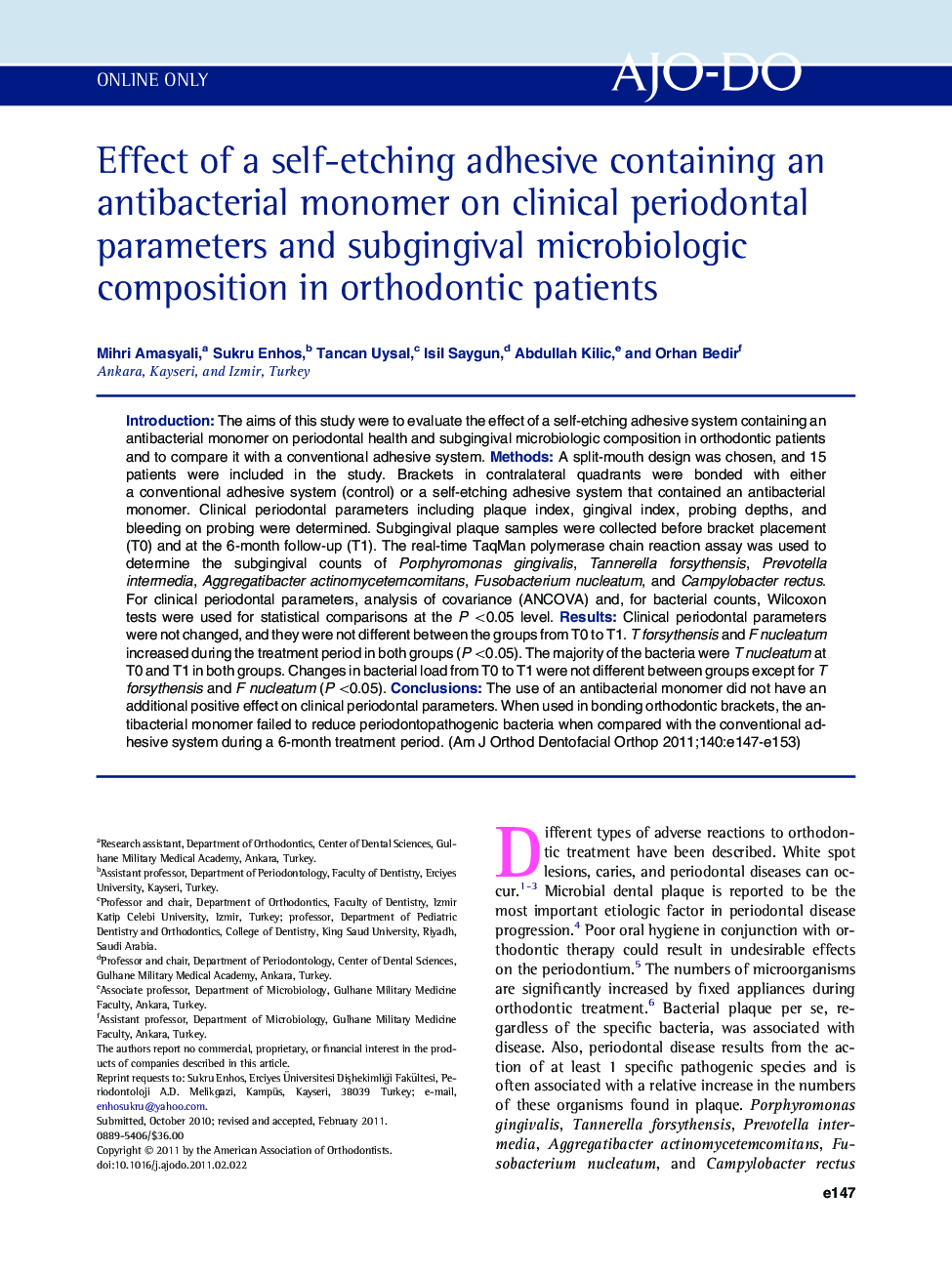| Article ID | Journal | Published Year | Pages | File Type |
|---|---|---|---|---|
| 3118187 | American Journal of Orthodontics and Dentofacial Orthopedics | 2011 | 7 Pages |
IntroductionThe aims of this study were to evaluate the effect of a self-etching adhesive system containing an antibacterial monomer on periodontal health and subgingival microbiologic composition in orthodontic patients and to compare it with a conventional adhesive system.MethodsA split-mouth design was chosen, and 15 patients were included in the study. Brackets in contralateral quadrants were bonded with either a conventional adhesive system (control) or a self-etching adhesive system that contained an antibacterial monomer. Clinical periodontal parameters including plaque index, gingival index, probing depths, and bleeding on probing were determined. Subgingival plaque samples were collected before bracket placement (T0) and at the 6-month follow-up (T1). The real-time TaqMan polymerase chain reaction assay was used to determine the subgingival counts of Porphyromonas gingivalis, Tannerella forsythensis, Prevotella intermedia, Aggregatibacter actinomycetemcomitans, Fusobacterium nucleatum, and Campylobacter rectus. For clinical periodontal parameters, analysis of covariance (ANCOVA) and, for bacterial counts, Wilcoxon tests were used for statistical comparisons at the P <0.05 level.ResultsClinical periodontal parameters were not changed, and they were not different between the groups from T0 to T1. T forsythensis and F nucleatum increased during the treatment period in both groups (P <0.05). The majority of the bacteria were T nucleatum at T0 and T1 in both groups. Changes in bacterial load from T0 to T1 were not different between groups except for T forsythensis and F nucleatum (P <0.05).ConclusionsThe use of an antibacterial monomer did not have an additional positive effect on clinical periodontal parameters. When used in bonding orthodontic brackets, the antibacterial monomer failed to reduce periodontopathogenic bacteria when compared with the conventional adhesive system during a 6-month treatment period.
